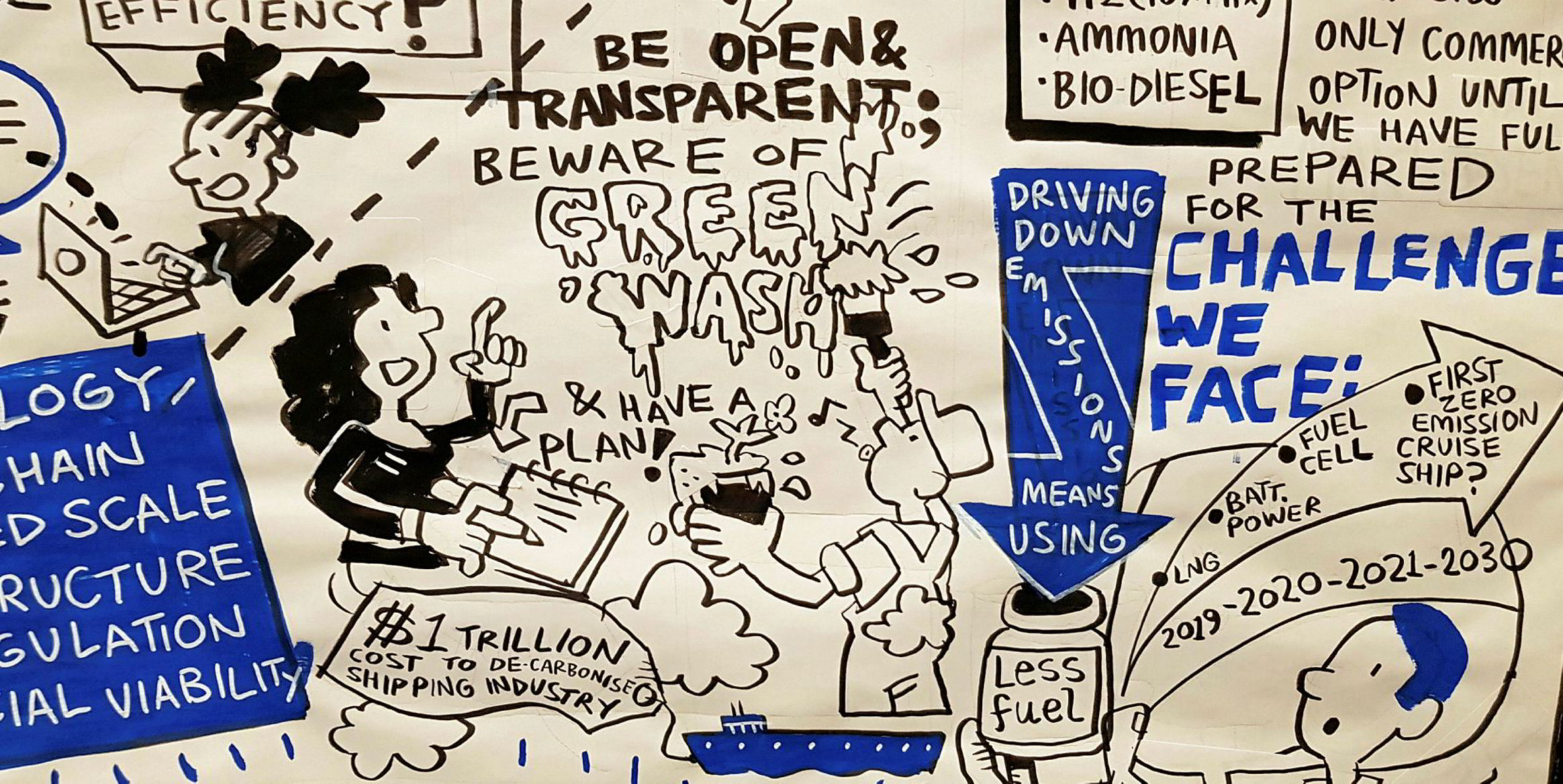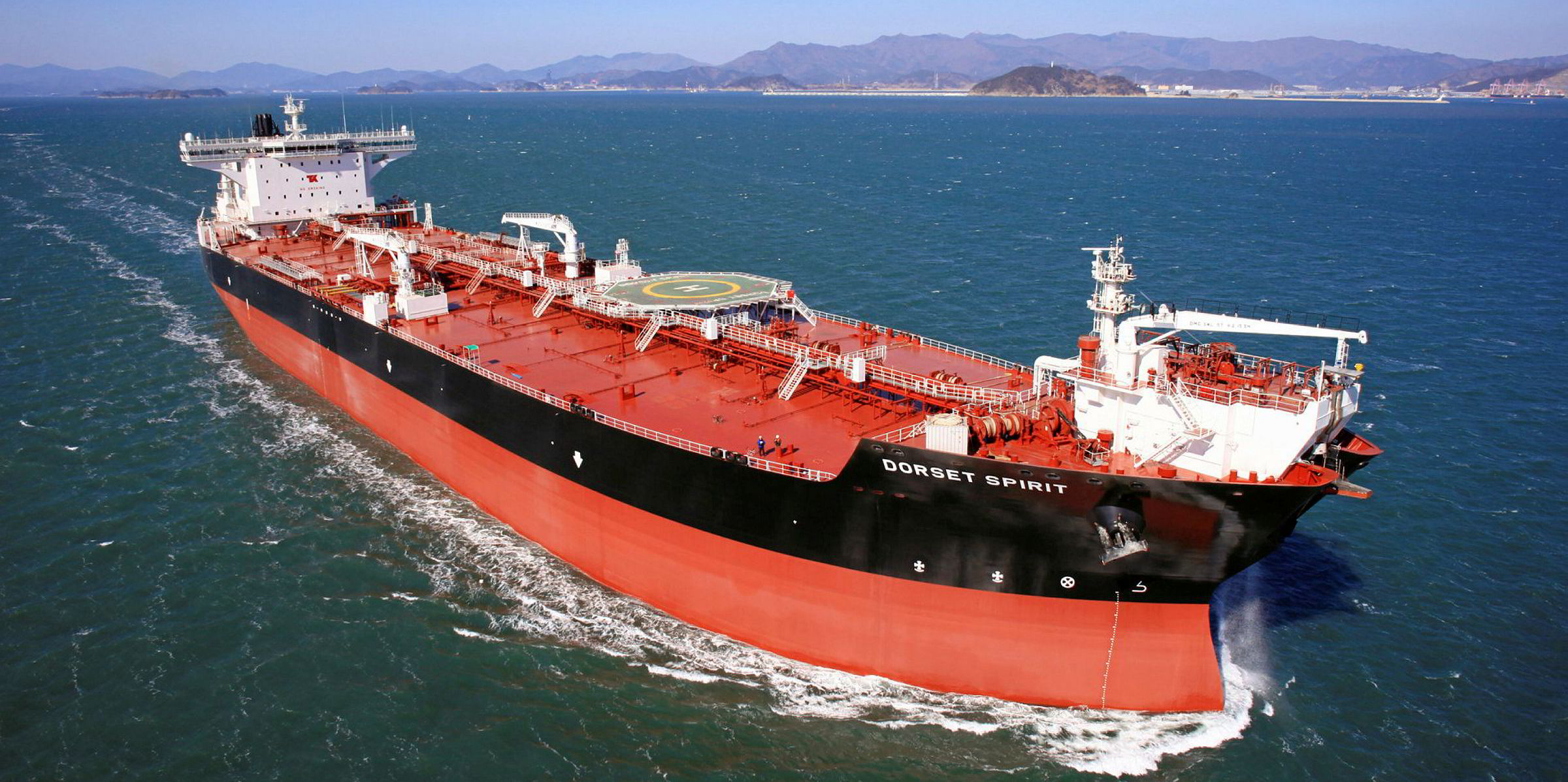The NGO setting global standards for the emerging industry of environmentally-minded shipping bonds says crude tankers and LNG carriers are inadequate to address climate change and do not deserve to carry the green “climate bond” label.
“Ships that are dedicated to the transport of fossil fuel and/or otherwise support the fossil fuel sector are excluded,” said the Climate Bonds Initiative (CBI), a non-profit organisation that runs a certification scheme for so-called climate bonds.
Since its launch in 2011, the CBI has certified bonds worth about $100bn across many different economic sectors — mainly renewable energy, low-carbon land transport and buildings, water infrastructure, waste management and protected agriculture.
Consultation period
The London-based organisation has been working since April 2019 to extend its list of covered industries to international and domestic shipping. On 29 April, the CBI announced a draft set of rules to do so and invited industry players to provide feedback until 26 June, when a consultation period ends.
The exclusion of LNG carriers, however, is a fundamental part of CBI’s thinking and highly unlikely to change.
“We don’t think there is a place for fossil fuels in our scenarios of what is a low-carbon, climate-resilient economy,” CBI policy manager Lionel Mok told TradeWinds.
That decision may irk several in the industry who promote LNG as a clean fuel that reduces CO2 emissions by up to 20% and cuts NOx, SOx and particulates to almost zero.
The CBI's reasoning focuses on the methane slip associated with LNG ships. Such emissions have increased recently and “there is a risk of this trend continuing in the future if shipping moves to LNG-powered ships,” the CBI said in a set of documents released last week.
This argument is in line with past outspoken statements by Tristan Smith, a reader in energy and transport at University College of London (UCL) who acted as a lead specialist coordinating the development of the CBI criteria, alongside UCL colleague Sophie Parker.
“You may be facing a situation where LNG is the Blu-ray of the marine fuelling market,” Smith said in a bunkering summit earlier this year.
Good, but not good enough
In a sign of how ambitious and stringent the CBI’s criteria are in that respect, they would have disqualified all the three first green shipping bonds actually sold in the market so far.
Japanese shipping firms NYK Line and MOL opened up the market in 2018, issuing about $180m combined in five-year bonds to partly finance LNG-fuelled vessels. In 2019, Teekay Shuttle Tankerssold $125m in unsecured bonds it called green, partially to fund four 130,000-dwt LNG-fuelled shuttle tanker newbuildings.
The CBI itself commented positively on the NYK Line and MOL bonds at the time they were issued. They represented the lowest-emission asset option for long-haul shipping and both companies promised to monitor and report data on their methane leakage, it said.
At the same time, however, the CBI argued that switching to LNG was insufficient to meet global UN warming goals of under 2C. “We simply do not have the time for incremental improvements,” the NGO said in its note at the time.
NYK Line sent delegates to the Industry Working Group overseeing the CBI's technical committee that developed the standards. AP Moller-Maersk is represented by its chief climate change advisor John Kornerup Bang.
Poseidon overlaps
Its tougher stance towards LNG ships differentiates the CBI from the Poseidon Principles, a growing initiative of major international banks to streamline and gear their lending practices towards green shipping.
It is perhaps telling that Societe Generale, a major investor in LNG infrastructure that subscribes to the Poseidon Principles, does not sit on the CBI’s Industry Working Group — unlike several other banks that take part in both initiatives, such as ABN Amro, Citigroup, Danske Bank, DNB and Nordea.
At a bunkering summit in February, Smith thanked panel chair Paul Taylor, Societe Generale’s managing director and global head of shipping and offshore, for casting him as “the pantomime villain”.
According to Mok, the CBI and the Poseidon Principles use the same metrics and they get overlapping backing from other maritime groups, such as the Rocky Mountain Institute and the Global Maritime Forum.
The nuclear option
The CBI refuses LNG ships but accepts tankers carrying LPG, chemicals and clean petroleum products and is also willing to contemplate nuclear energy as a possible way to reduce carbon emissions.
Even bulkers occasionally carrying fossil fuels such as coal can obtain certification, CBI said: "It is recognised that some ship types that carry dry bulk commodities may also be leased to transport both fossil-fuel and non-fossil fuel cargo, but the ship type itself is — unlike an oil tanker — not dedicated to fossil fuel carriage and so is not excluded".
Product and chemical tankers get the green light as well because they could also carry non-fossil fuels. Similarly, the CBI clears LPG vessels on the argument that they may find a new role as ammonia carriers.
“Given the evidence, based on the importance of ammonia to future energy scenarios in shipping and the wider economy, we have included LPG/ammonia carriers,” Mok said.
Some LPG players feel this does not take account of the full picture. “A holistic view has to be taken of the whole lifecycle of the fuel — from how it originates to how it is used on the ship and then, of course emissions,” said Alex Hadjipateras, executive vice president of US-listed LPG Dorian, which is a member of the Getting to Zero Coalition.
“It is not fair to work backwards and say, well, because ammonia is carbon-neutral it is the cleanest fuel... I believe that LPG as a fuel is as practical and competitive as any clean fuel that is out there today,” Hadjipateras told TradeWinds.
Some green groups may also disagree with CBI’s inclusion of nuclear energy in a mix of acceptable, but reviewable, ways to reduce carbon emissions in the future.
Nuclear is mentioned in the same breath as hydrogen, ammonia and advanced biofuels as part of technologies that can be included in so-called “Managed Reduction Plans”, which shipowners will have to submit in order to convince investors that the ships they are about to finance will continue reducing CO2 emissions, even after the tenure of their climate bonds expire.
CBI has drawn up detailed “declining emissions intensity” targets for that purpose, covering different types of non-zero carbon ships and measured by emissions output per distance or per ton-mile of transport work.
The declining emissions intensity is to start at median 2012 levels and decline to zero by 2050.
Ships must provide annual proof they remain underneath those thresholds throughout the life of the bond and submit technical evidence that they will keep doing so over their entire operating life, even after the bond matures.
No false labels
Correct and reliable environmental labelling is arguably the biggest problem green financing faces. Green bonds have been labelled on an ad-hoc basis so far, by agencies such as specialist environmental consultancy Vigeo Eiris and Cicero, a Norway-based climate research institute.
This can create confusion in the market. Teekay’s bond is a case in point. Sweden’s SEB bank, reportedly the world’s biggest underwriter of green bonds, acted as the issue’s sole “green” advisor and joint lead manager.
Cicero provided outside, second opinion on the issue and granted it a “Light Green” rating — the second-lowest in Cicero’s four-rank system of greenery assessment attributed to projects that "are climate-friendly but do not represent or contribute to the long-term vision” of decarbonisation.
Just after Teekay sold the bonds in October last year, however, it had to deny a report in the Financial Times that it had fallen short of its fundraising target, in part because some investors were “skittish” that a company carrying crude cargoes should be designated “green”.
At a later point, investors in Teekay Offshore, a unit of Teekay, used material included in the green bond’s prospectus to back up a lawsuit in which they claim, among other things, that they were misled in connection with Teekay Offshore’s takeover by Brookfield Business Partners.
Teekay Offshore is currently known as Altera Infrastructure and Teekay Shuttle Tankers has become Altera Shuttle Tankers. Brookfield has moved to dismiss the lawsuit.
The way ahead
CBI expects its Climate Bonds Standard Board (CBSB) to approve the new set of shipping standards shortly after the consultation period ends, so it can go live with them on the market by the end of the third quarter of this year.
The CBSB gathers funds representing $34trn of assets under management. That includes major global players like Pictet and the California State Teachers' Retirement System, or CalSTRS.
That engagement reflects the interest of pension funds to cover for climate change risks. Sweden’s public pension fund was one of the earliest investors in green bonds.
“It’s hard to say where the pick-up will be... but we see more and more investors understanding that they need to green their portfolios and we’re hoping that this translates to demand in terms of green shipping bonds,” Mok said.
Reputation gains and, hopefully, higher yields are another selling points for the securities.
“We hope that after we launch them we’ll have one or two early adopters as a proof of concept that there are eligible assets,” Mok said.
According to the CBI official, the easiest certifications to be awarded should be for existing zero-emission vessels, which are automatically eligible for certification.
Short-haul electrical hydrogen ferries, perhaps in Scandinavia, would be an obvious candidate. "We might see a few there — if not bonds, they could be loans or debt instruments, which we can also certify. The most impact we’re hoping to see is in the transcontinental sort of large-scale shipping space,” Mok said.
Julian Bray contributed to this article






